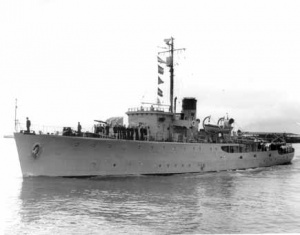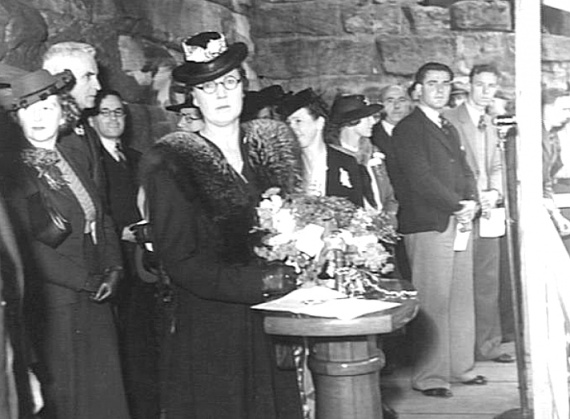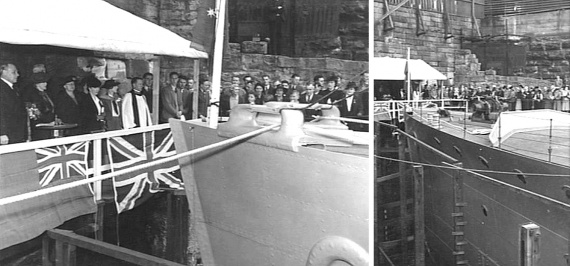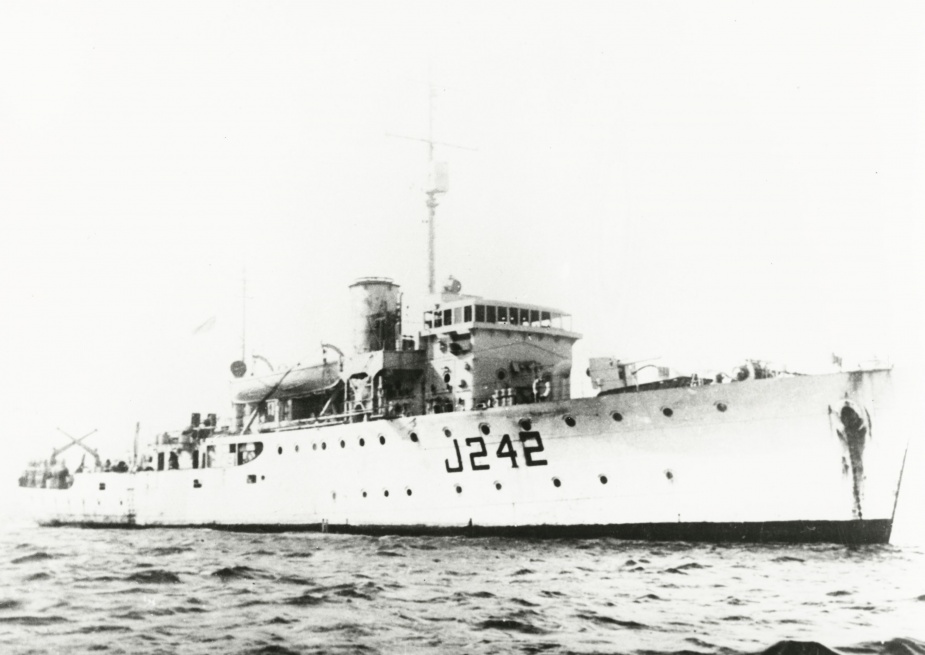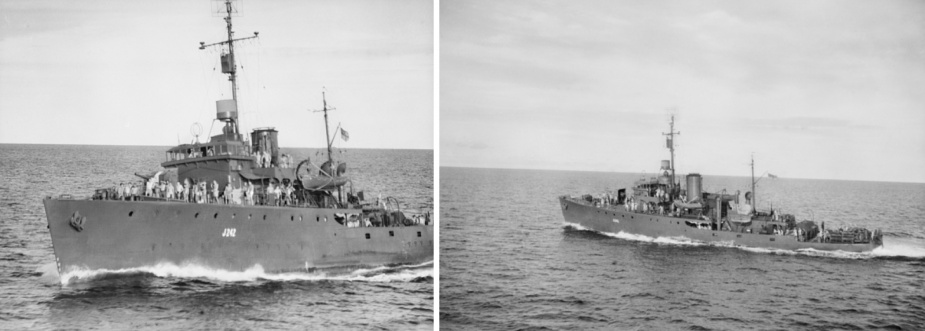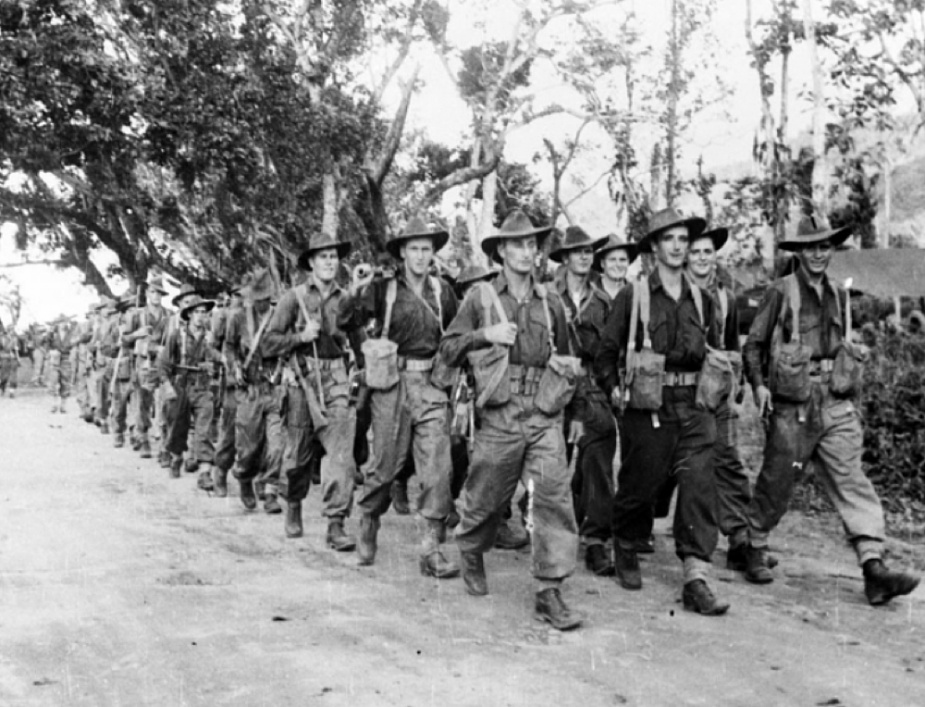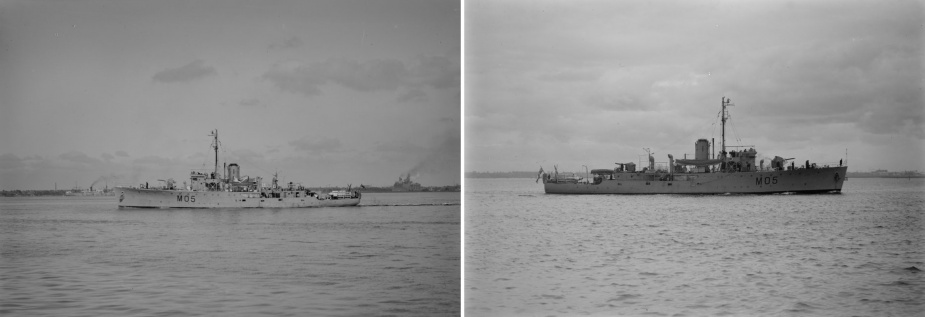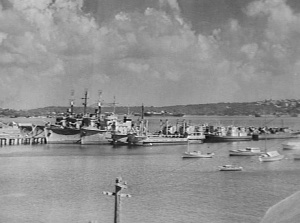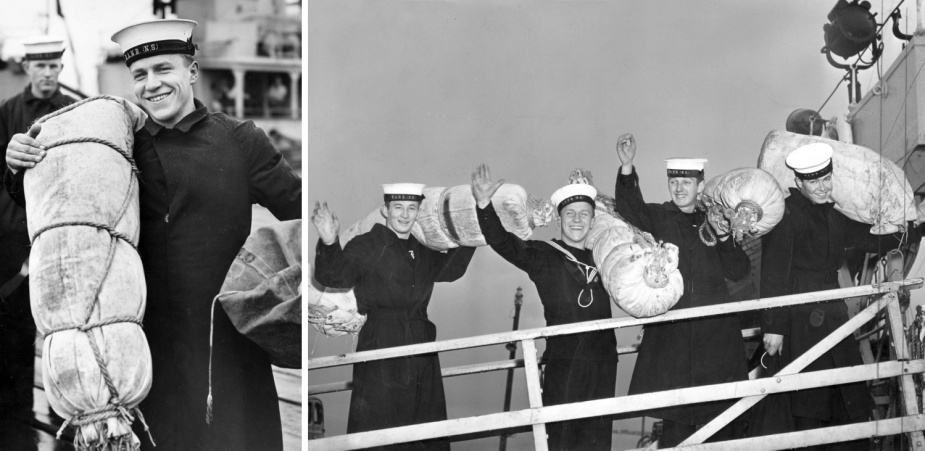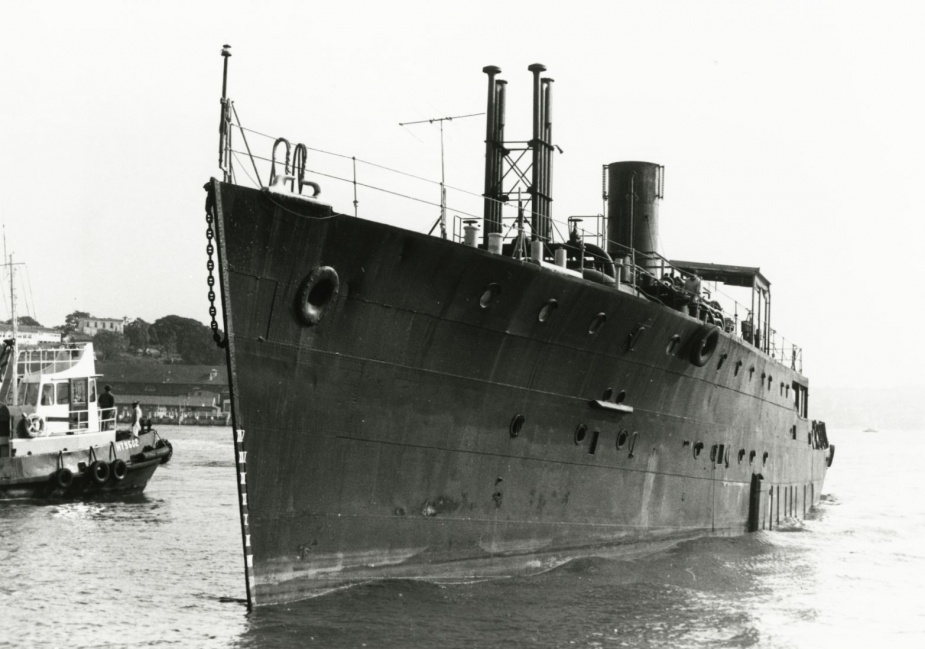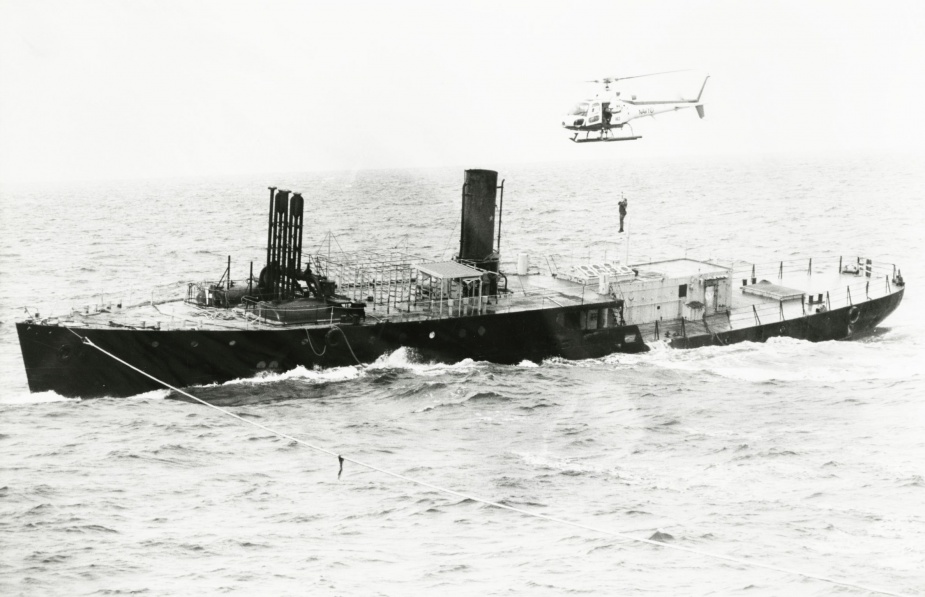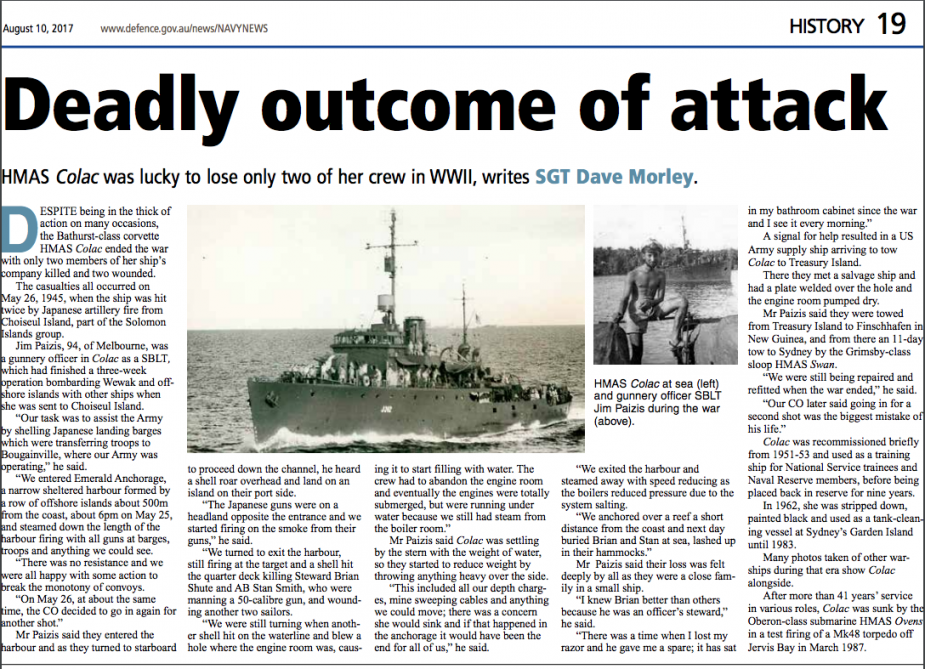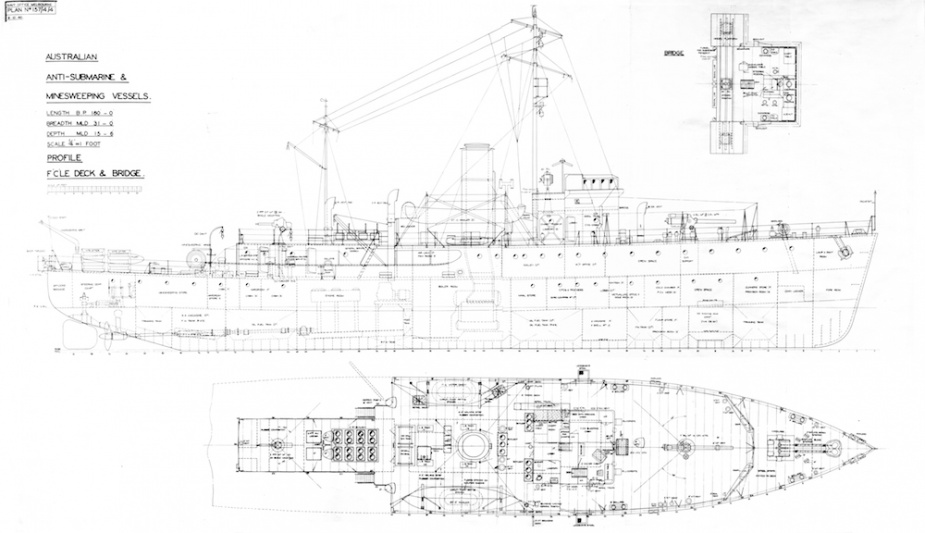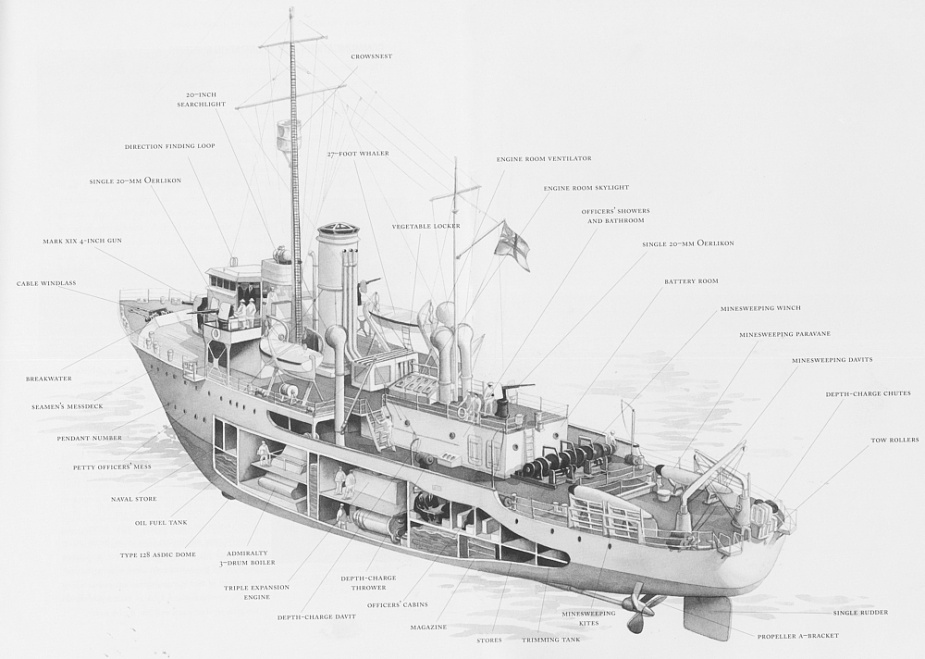HMAS Colac
| Class |
Bathurst Class |
|---|---|
| Type |
Australian Minesweeper |
| Pennant |
J242, M05 |
| Builder |
Mort's Dock and Engineering Co Ltd, Sydney |
| Laid Down |
18 April 1941 |
| Launched |
30 August 1941 |
| Launched by |
Miss M Heady, senior lady on the staff of Mort's Dock and Engineering Co Ltd |
| Commissioned |
6 January 1942 |
| Decommissioned |
27 November 1945 |
| Dimensions & Displacement | |
| Displacement | 650 tons |
| Length | 186 feet |
| Beam | 31 feet |
| Draught | 8 feet 6 inches |
| Performance | |
| Speed | 15 knots |
| Complement | |
| Crew | 85 |
| Propulsion | |
| Machinery | Triple expansion, 2 shafts |
| Horsepower | 2000 |
| Armament | |
| Guns |
|
| Other Armament |
|
| Awards | |
| Battle Honours | |
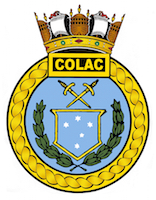
HMAS Colac was one of sixty Australian Minesweepers (commonly known as corvettes) built during World War II in Australian shipyards as part of the Commonwealth Government’s wartime shipbuilding programme. Twenty were built on Admiralty order but manned and commissioned by the Royal Australian Navy. Thirty six (including Colac) were built for the Royal Australian Navy and four for the Royal Indian Navy.
HMAS Colac was laid down at Mort’s Dock and Engineering Co Ltd, Sydney, NSW on 18 April 1941. She was launched on 30 August 1941 by Miss M Heady, senior lady on the staff of Mort’s Dock and Engineering Co Ltd and was the first RAN warship to carry the name of the small city in the western district of Victoria. By the war’s end Mort's Dock had constructed fourteen of the sixty Bathurst Class corvettes.
Colac commissioned at Sydney on 6 January 1942 under the command of Lieutenant Commander Dudley C Northam RANR(S).
Following a working up period in January 1942, Colac was assigned to anti-submarine patrol and convoy escort duty, operating between Townsville and New Guinea.
In December 1942 Colac and her sister ships HMA Ships Ballarat and Broome were detailed to transport Australian troops and land them as far forward as possible in the Buna area. The three vessels reached the landing point at Cape Sudest near Oro Bay without incident, but a few minutes later unidentified aircraft began dropping flares. Because of the threat of attack from enemy aircraft and from enemy warships believed to be in the area it was decided to retire temporarily after only 46 men had disembarked of a total of 762. Later the same day (14 December) the operation was successfully completed using a new landing position and under cover of darkness all troops were put safely ashore. During the remainder of the month Colac was involved in troop carrying on three further occasions.
Colac took part in Operation LILLIPUT, the reinforcement, supply and development of the Buna/Gona area after its capture.
In March 1943 Colac detached from operations in the forward areas and was assigned to convoy escort duty on the Australian east coast. Enemy submarines were operating in the area at the time and on 26 April a convoy of five ships escorted by Colac and Ballarat was attacked about 20 miles south-east of Cape Byron. The British ship MV Limerick was hit by a torpedo and sank. Efforts to locate and destroy the Japanese submarine failed but Colac rescued all but two of Limerick’s crew.
In July 1943 Colac returned to the escort of convoys between Australia and New Guinea, which kept her almost constantly at sea for the remainder of the year. In January 1944 she resumed escort of east coast convoys for a brief period before a refit prior to further New Guinea service.
The ship returned to New Guinea waters in April 1944. Throughout the remainder of 1944 and the early months of 1945 she was operational on escort, patrol and transport duties as far forward as the Halmahera Group. In April and May 1945 Colac, in company with the sloop HMAS Swan and her sister ships HMA Ships Deloraine and Dubbo, gave bombardment support to operations in the Wewak area. Targets included Muschu Island, Kairiru Island, Cape Samier and Wewak.
In May she proceeded to Bougainville in the Solomon Islands where she took part in operations to prevent Japanese troops on Choiseul Island from evacuating to Bougainville and to harass the enemy and destroy his installations on the coast. During these operations Colac sustained her first casualties on 26 May when she received two hits from enemy shore batteries. The first killed two ratings and wounded two others while the second shell struck the ship on the waterline. She began to settle by the stern, but after moveable stores, depth charges and fittings aft had been jettisoned, she was able to proceed for Treasury Island, but had to be taken under tow for the latter part of the voyage to Blanche Harbour.
After temporary repairs she was towed to Finschhafen in New Guinea. From there she was taken to Sydney where she arrived on 18 June 1945, to go into dockyard hands. The ship was still in dockyard hands when hostilities ended on 15 August. She paid off into Reserve at Sydney on 27 November 1945, without again becoming operational. She had steamed 119, 991 miles since commissioning.
On 20 February 1951 Colac recommissioned for service as a training ship for National Service Trainees and Naval Reserve personnel. In this role she served on the Australian Station for two years. She paid off into Reserve at Sydney on 30 January 1953, having steamed a further 33,317 miles.
Note: This video is hosted on YouTube. Department of Defence users will not be able to view this video on the Defence Protected Network.
This cine film has been placed online as part of the Sea Power Centre - Australia’s ongoing archival digitisation program.
Further reading
- Notable Service to the Empire: Australian Corvettes and the British Pacific Fleet, 1944-45, by Hugh Campbell - published by Naval Historical Society of Australia Inc, Garden Island, 1995.
- The Corvettes: Forgotten Ships of the Royal Australian Navy, by Iris Nesdale - published by the author, October, 1982.
- Corvettes - Little Ships for Big Men, by Frank B Walker - published by Kingfisher Press, NSW, 1996.
- The Australian Centenary History of Defence Volume III, The Royal Australian Navy, edited by David Stevens, Oxford University Press, South Melbourne, Victoria, Australia, 2001.

